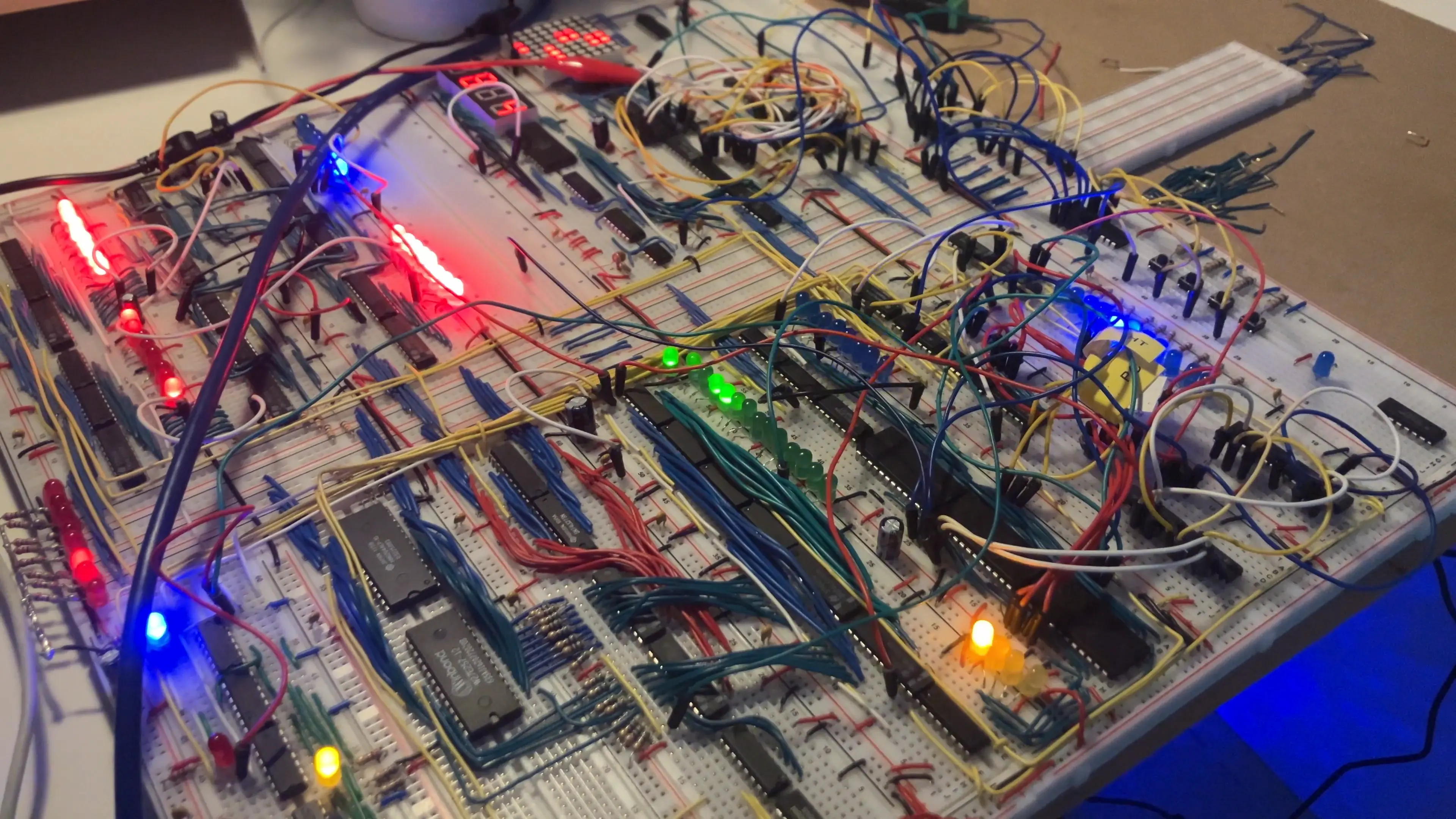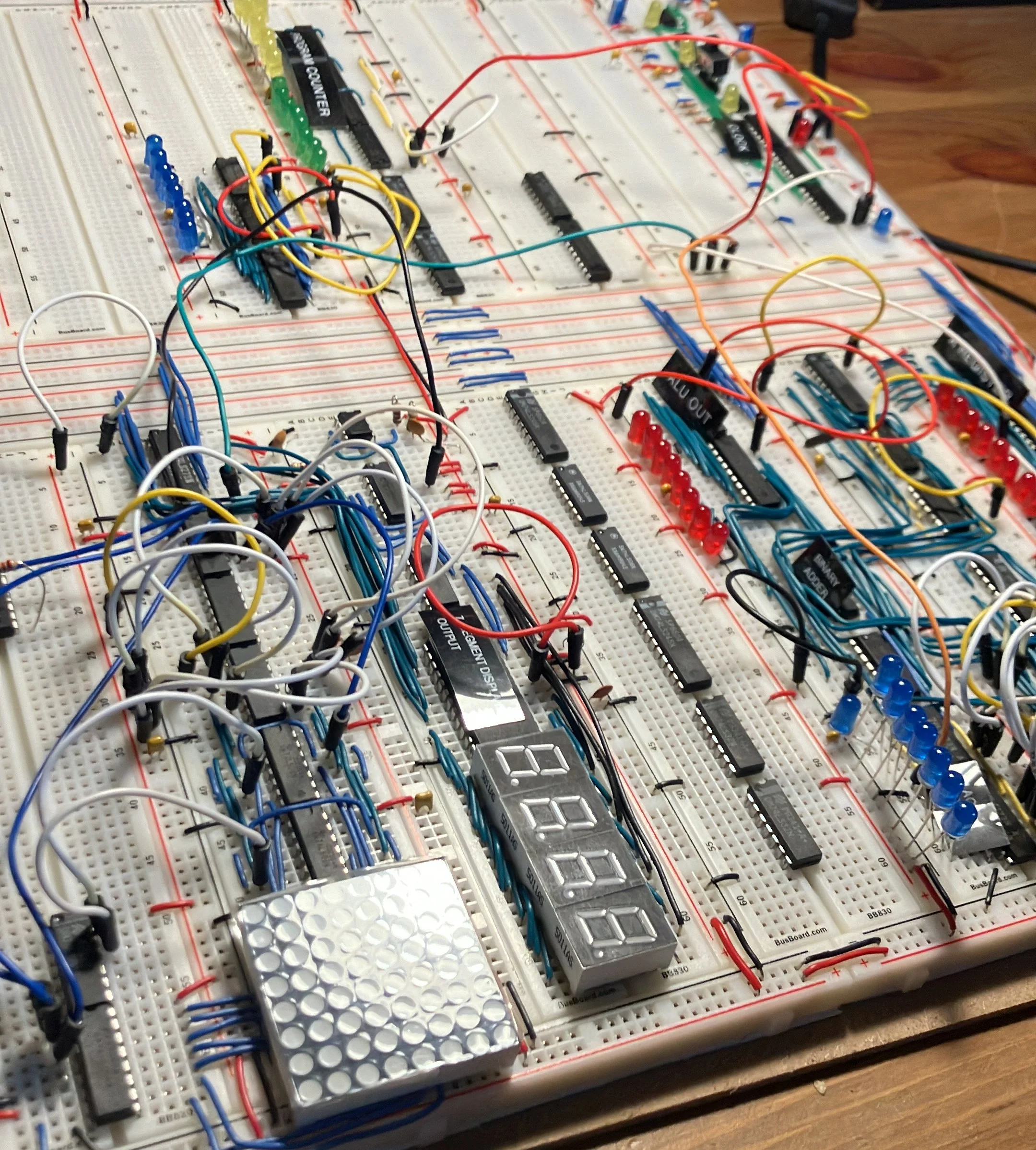8-bit Computer
A fully functional 8-bit computer built from scratch using simple logic gates on a breadboard, capable of running simple programs.
What I learned from this project?
Building an 8-bit computer from the ground up on breadboards has been one of my most formative projects. While inspired by Ben Eater's renowned series, I challenged myself to go beyond simple replication. I expanded upon the original design, engineering significant upgrades such as increasing the memory to 4KB of RAM, implementing a 12-bit address bus, creating a dynamically sized instruction set, and integrating a custom 8x8 LED matrix and audio output.
This project was a deep dive into the fundamental workings of a computer. It demystified low-level concepts like memory addressing and pointers, fostering a profound appreciation for the abstractions we rely on in modern computing. More importantly, it sparked my curiosity about advanced topics like operating systems, concurrency, and computer architecture, setting me on a path to explore the deeper fundamentals of computer science and expanding my knowledge.

The completed 8-bit computer on breadboards.
The Engineering Challenges
It's important to note that this design intentionally deviates from modern best practices, such as using multiple registers or a dedicated stack. These constraints were not just limitations but creative catalysts. Working with limited resources forced me to devise unconventional solutions and develop a more intuitive understanding of hardware-level problem-solving.

An early stage of the computer.
Future Roadmap
While time and resource constraints have paused active development, I have a clear roadmap for future enhancements. Key goals include developing a VGA interface for video output, creating a dedicated input system, and implementing a basic BIOS to support a command-line interface. These additions would transform the machine from a low-level demonstrator into a more interactive and capable microcomputer.